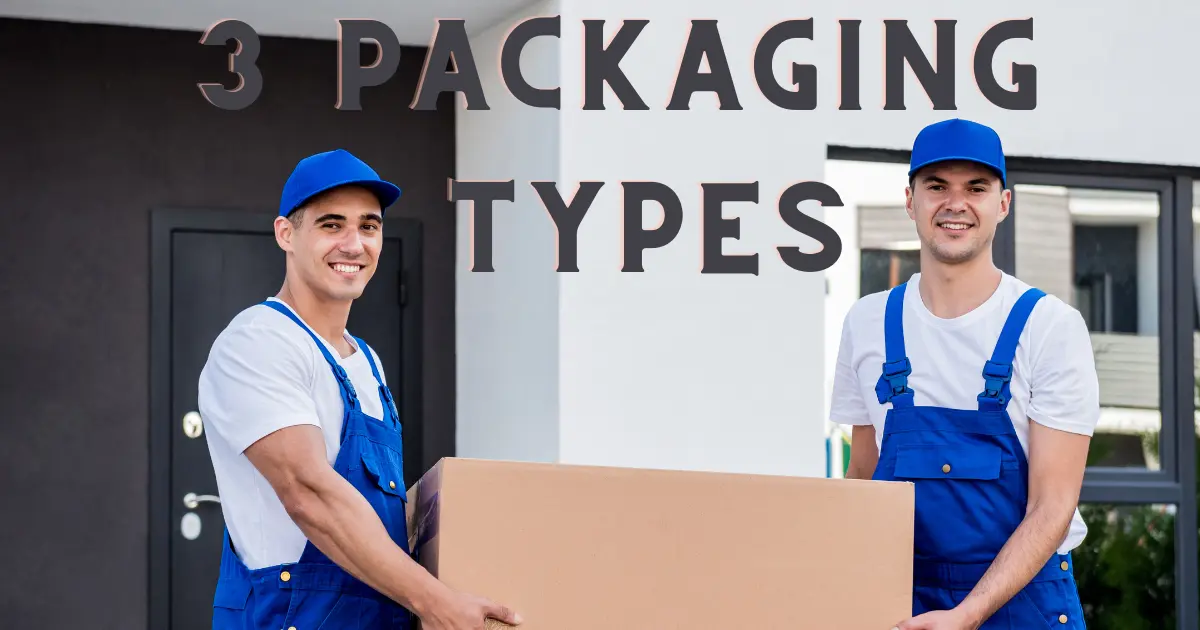Have you ever wondered how London Removals manages to get your fragile items from one place to another without a single scratch? The secret lies in the type of packaging used.
Let’s dive into the exciting world of packaging and unravel the top 3 types that ensure your possessions reach their destination safe and sound.
Understanding the Importance of Packaging
Packaging, whilst taken for granted by many, is the silent salesman working tirelessly on your behalf.
Imagine you’re relocating; services of companies such as London Removals are sought after to ensure that each item gets to your new home with its form and function intact.
The significance of packaging suddenly becomes clear – it not only transports but also preserves and communicates about the product inside.
Consider packaging to be more than just a shell or a casing; rather view it as a trusted custodian that protects against damage during transits like those managed by renowned London removals firms.
More than just physical protection, packaging reinforces brand identity and influences consumer decisions. It has an impact on how we perceive value and quality – sometimes louder than words can express!
Thus, effective packaging is clearly more indispensable in our lives than perhaps we ever realized.
Type 1: Rigid Packaging – Advantages and Uses
When it comes to reliable and sustainable packaging solutions, rigid packaging takes the lead.
Imagine shifting your home or office with London removals, wouldn’t you desire a form of packing that offers the highest level of protection to your belongings? With its sturdiness and near-impenetrable construct, rigid packaging is your trusty safety guard for those invaluable antique ceramics or that priceless painting you want to be relocated safely.
Furthermore, not only does rigid packaging provide superior protection against damage but it also enhances product presentation. It plays an undeniable role in creating a high-end image for goods.
Whether you’re planning to trade at London’s famous Portobello Road Market or organizing house removals through London removals services, insist on utilizing rigid packaging to make an iconic style statement along with securing items’ security.
Type 2: Flexible Packaging – Benefits and Applications
Sifting through the kaleidoscope of packaging options, from rigid to flexible, can be daunting.
But it’s clear that one star stands out brilliantly from the rest in the London removals scene Flexible Packaging.
It’s safe to say that flexible packaging is not just an iconic symbol for modern transport efficiency but also represents a significant shift towards green logistics.
Flexible packaging integrates so effortlessly into an array of applications, made even more attractive by its benefits linked to environmental consciousness and storage economy.
They are lightweight, reducing transportation costs and carbon emissions associated with heavy transportation loads. Furthermore, their space-efficient nature comes in handy when moving goods during home or office removals in London where every inch counts.
The impressive design versatility enhances product uniqueness while striking a balance between aesthetics and utility – a real game-changer in packing solutions in our evolving world.
Type 3: Semi-Rigid Packaging – Pros and Key Areas of Usage
Semi-rigid packaging has gained immense popularity in recent times due to its numerous advantages.
One key advantage is its ability to provide product visibility while still offering protection.
This transparency allows consumers to see the quality and condition of the product they are purchasing, creating a sense of trust and satisfaction.
Another advantage of semi-rigid packaging is its versatility in terms of usage. It can be employed across various industries, from food and beverages to pharmaceuticals and cosmetics.
The durability of semi-rigid materials makes them suitable for protecting a wide range of products, ensuring that they reach consumers intact.
Additionally, this type of packaging can be easily customized and branded, allowing companies to showcase their products with eye-catching designs that help them stand out from the competition.
In conclusion, semi-rigid packaging provides multiple benefits such as enhanced product visibility and versatility in usage.
Whether it’s protecting delicate foods or fragile cosmetic items during removals in London or ensuring the safe delivery of pharmaceuticals, semi-rigid packaging offers an ideal solution for companies looking for reliable and attractive packaging options.
With its growing demand and increasing innovations in design and sustainability, it is clear that this type of packaging will continue to play a significant role in shaping various industries in the future.
Choosing the Right Packaging for Your Product
When it comes to choosing the right packaging for your product, there are several important factors to consider. Firstly, you need to think about the size and shape of your product.
This will determine what type of packaging is most suitable, whether it be a box, bag, or container.
Additionally, you need to take into account the fragility of your product. If your item is delicate or prone to damage, you may want to choose packaging that offers extra protection such as bubble wrap or foam inserts.
Another crucial consideration is branding. Your packaging should reflect the image and values of your brand in order to make a lasting impression on customers.
Use colors and designs that align with your brand identity and consider adding custom labels or stickers for added personalization.
Overall, selecting the right packaging for your product involves careful thought and consideration. By taking into account factors such as size, fragility, and branding, you can ensure that your product reaches its destination safely while making a positive impact on customers along the way
The Environmental Impact of Different Packaging Types
When it comes to packaging, considering its environmental impact is crucial. Different packaging types have varying levels of ecological consequences, and understanding these implications can help us make more informed choices.
While plastic packaging often gets a bad reputation due to its non-biodegradable nature, it is worth noting that certain plastic materials can be recycled efficiently, thus reducing their overall harm to the environment. Alternatively, paper packaging may seem like a greener option as it is biodegradable;
however, the production process for paper requires large amounts of water and energy and contributes to deforestation.
Another packaging type gaining popularity in recent years is biodegradable or compostable materials. These options offer a promising solution as they break down naturally over time without causing significant harm to the environment.
However, there are still challenges with this type of packaging – such as the availability of appropriate composting facilities and consumer education on proper disposal methods. Additionally, glass packaging may be seen by some as an environmentally friendly choice due to its recyclability; yet, producing glass requires substantial energy resources and transportation costs.
In conclusion, assessing the environmental impact of different packaging types involves considering various factors beyond their immediate recyclability or biodegradability.
It is essential to evaluate not only how these materials are produced but also their overall lifecycle impact – including energy consumption during manufacturing processes and transportation emissions. As consumers become more conscious about sustainability, choosing eco-friendly options can help reduce our carbon footprint while driving industry innovation towards truly sustainable solutions in the world of packaging.
Conclusion: Summarizing the Importance of Appropriate Packaging
In conclusion, appropriate packaging plays a crucial role in various aspects of our lives. It ensures the safety and quality of products, minimizes waste and environmental impact, enhances consumer experience, and promotes brand image and reputation.
From the moment a product is manufactured to its delivery at the consumer’s doorstep, packaging serves as a protective shield that safeguards the product from damage or contamination. By using sustainable materials and designing eco-friendly packaging solutions, we can contribute to reducing our carbon footprint and preserving our environment for future generations.
As consumers, it is important to make informed choices by supporting companies that prioritize responsible packaging practices. Let us recognize the importance of appropriate packaging and encourage businesses to adopt sustainable packaging solutions for a greener future.

